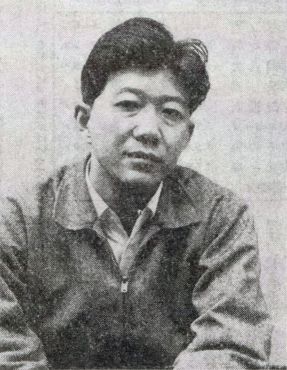Morio Kita on:
[Wikipedia]
[Google]
[Amazon]
 was the
was the
 was the
was the pen name
A pen name, also called a ''nom de plume'' or a literary double, is a pseudonym (or, in some cases, a variant form of a real name) adopted by an author and printed on the title page or by-line of their works in place of their real name.
A pen na ...
of , a Japanese
Japanese may refer to:
* Something from or related to Japan, an island country in East Asia
* Japanese language, spoken mainly in Japan
* Japanese people, the ethnic group that identifies with Japan through ancestry or culture
** Japanese diaspor ...
psychiatrist, novelist and essayist.
Kita was the second son of poet
A poet is a person who studies and creates poetry. Poets may describe themselves as such or be described as such by others. A poet may simply be the creator ( thinker, songwriter, writer, or author) who creates (composes) poems (oral or writte ...
Mokichi Saité
was a Japanese people, Japanese poet of the Taishé period, a member of the Araragi (magazine), Araragi school of tanka, and a psychiatrist.
The psychiatrist Shigeta Saité (:ja:ÌÒÊÒÍʈ, ''Japanese Wikipedia article'') is his first son, the ...
. Shigeta Saité, his older brother, was also a psychiatrist. The essayist Yuka Saité is Kita's daughter.
Kita attended Azabu High School
, referred to as "Azabu" by most, is a private preparatory day school in Japan. It teaches boys between seventh and twelves grades. The campus of Azabu is located in the Azabu district of Minato, Tokyo, Japan. Azabu High School technically consi ...
and Matsumoto Higher School (now part of Shinshu University
, abbreviated to , is a Japanese national university located in Matsumoto, Nagano Prefecture, Japan. As the only university in Japan bearing the name of a former Japanese province, it bears the name "Shinshu" (alternative name for Shinano Provin ...
), and graduated from Tohoku University
, or is a Japanese national university located in Sendai, Miyagi in the Téhoku Region, Japan. It is informally referred to as . Established in 1907, it was the third Imperial University in Japan and among the first three Designated National ...
's School of Medicine. He initially worked as a doctor at Keio University
, mottoeng = The pen is mightier than the sword
, type = Private research coeducational higher education institution
, established = 1858
, founder = Yukichi Fukuzawa
, endowmen ...
Hospital. Motivated by the collections of his father's poems and the books of German author Thomas Mann
Paul Thomas Mann ( , ; ; 6 June 1875 ã 12 August 1955) was a German novelist, short story writer, social critic, philanthropist, essayist, and the 1929 Nobel Prize in Literature laureate. His highly symbolic and ironic epic novels and novella ...
, he decided to become a novelist.
Kita suffered from manicãdepressive disorder from middle age onwards.
Awards
* 1960:Akutagawa Prize
The is a Japanese literary award presented biannually. Because of its prestige and the considerable attention the winner receives from the media, it is, along with the Naoki Prize, one of Japan's most sought after literary prizes.
History
The ...
, for the novel, ''In The Corner Of Night And Fog'', which takes its title from Nacht und Nebel
''Nacht und Nebel'' (German: ), meaning Night and Fog, was a directive issued by Adolf Hitler on 7 December 1941 targeting political activists and resistance "helpers" in the territories occupied by Nazi Germany during World War II, who were to ...
, the Nazi campaign to eliminate Jews, the mentally ill and other minorities. The novel concerns the moral quandary of staff at a German mental hospital during the final years of the Second World War. Faced with demands from the SS that the most severely ill patients be segregated for transportation to a special camp, where it is obvious that they will be eliminated, the more morally conscious of the doctors make desperate efforts to protect the patients without outwardly defying the authorities. A parallel theme is the personal tragedy of a young Japanese researcher affiliated with the mental hospital, whose own schizophrenia has been triggered by the disappearance of his half-Jewish wife. (Shinchosha Co., Morio Kita - ''In the Corner of Night and Fog and Other Stories'', 2011)
Bibliography
''Incomplete - to be updated''Novels
* ''Ghosts'' (1954) * Briefly noted in ''The New Yorker
''The New Yorker'' is an American weekly magazine featuring journalism, commentary, criticism, essays, fiction, satire, cartoons, and poetry. Founded as a weekly in 1925, the magazine is published 47 times annually, with five of these issues ...
'' 60/48 (14 January 1985): p. 117
Essays
* Papa wa Tanoshii Séutubyé (work with Yuka Saité,Asahi Shimbun Company
is one of the four largest newspapers in Japan. Founded in 1879, it is also one of the oldest newspapers in Japan and Asia, and is considered a newspaper of record for Japan. Its circulation, which was 4.57 million for its morning edition an ...
, )
Work for television
*Nescafûˋ
Nescafûˋ is a brand of coffee made by Nestlûˋ. It comes in many different forms. The name is a portmanteau of the words "Nestlûˋ" and "cafûˋ". Nestlûˋ first introduced their flagship coffee brand in Switzerland on 1 April 1938.
History
Nestlû ...
Gold Blend commercial (1974)
* Tetsuko no Heya (1980 and 12 May 2008; with Yuka Saité)
References
1927 births 2011 deaths Azabu High School alumni Japanese children's writers Japanese essayists Japanese fantasy writers 20th-century Japanese novelists 21st-century Japanese novelists Japanese psychiatrists Japanese travel writers Keio University faculty Night and Fog program People with bipolar disorder Tohoku University alumni Akutagawa Prize winners Writers from Tokyo 20th-century essayists 21st-century essayists 20th-century pseudonymous writers {{Japan-writer-stub